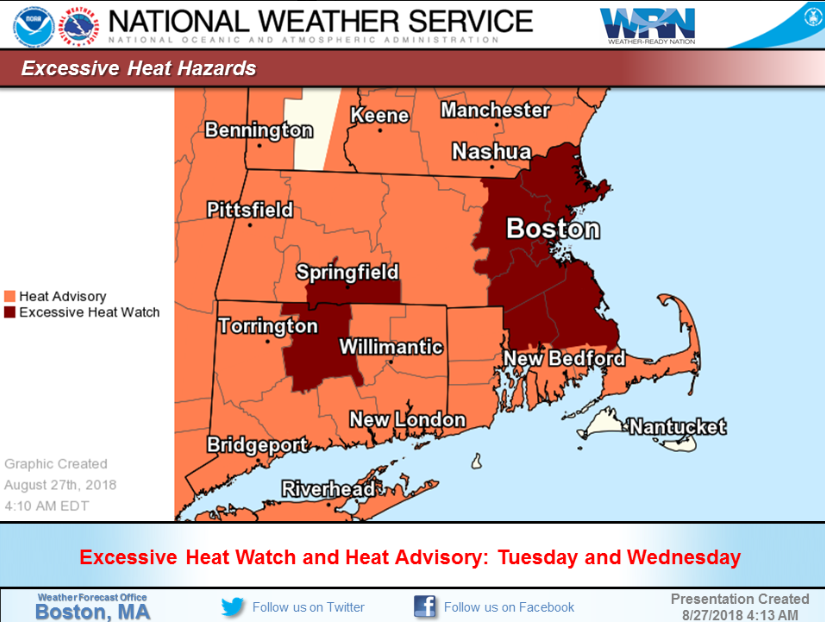Fewer Excessive Heat Warnings: What This Means For You

Table of Contents
Reasons for Fewer Excessive Heat Warnings
Several factors contribute to the apparent decrease in excessive heat warnings. Understanding these factors is key to interpreting the data and ensuring personal safety.
Improved Forecasting Technology
Advancements in meteorology have significantly enhanced our ability to predict and monitor extreme weather events.
- More accurate models: Sophisticated computer models utilize vast datasets to predict heat waves with greater precision.
- Better data collection: An expanded network of weather stations, coupled with improved satellite imagery, provides a more comprehensive picture of temperature and humidity levels.
- Improved satellite imagery: High-resolution satellite data allows for more detailed monitoring of land surface temperatures and heat island effects in urban areas.
This increased accuracy leads to more precise warnings. While this might result in fewer excessive heat warnings, it doesn't indicate a reduction in the actual number of dangerous heat events. The warnings may simply be more targeted and refined.
Changing Weather Patterns (Potential Climate Change Impact)
Some studies suggest that changing weather patterns, potentially influenced by climate change, might also play a role in the number of heat warnings issued. It's important to note this is a complex issue with ongoing research.
- More frequent but shorter heat waves: Instead of prolonged periods of extreme heat, we may see more frequent but shorter heat waves.
- Regional variations in heat intensity: The impact of climate change varies geographically, leading to shifts in the intensity and frequency of heat waves in different regions.
- Potential implications of climate change: While more research is needed to establish a definitive link, climate change models predict more frequent and intense heat waves in the future.
It is crucial to emphasize that fewer warnings do not equate to diminished risk. The potential for dangerous heat events remains, even if the official warnings are less frequent.
Policy and Warning Threshold Adjustments
The criteria for issuing excessive heat warnings can be adjusted over time based on data analysis and evolving understanding of heat-related risks.
- Changes in criteria for issuing excessive heat warnings: Agencies may adjust thresholds based on factors like mortality data, public health concerns, and advancements in heat wave forecasting.
- Potential reasons for adjustments: These changes could reflect a better understanding of heat's impact or adjustments to reflect regional variations in heat tolerance.
Understanding how these threshold changes impact the frequency of warnings is essential to avoid complacency. Fewer warnings do not necessarily mean less danger.
The Dangers of Complacency
The reduction in excessive heat warnings should not lead to complacency. Heat-related illnesses remain a significant threat.
The Persistent Threat of Heat-Related Illness
Even without official warnings, extreme heat poses considerable risks.
- Heat stroke: A life-threatening condition characterized by a body temperature above 103°F (39.4°C), confusion, seizures, and loss of consciousness.
- Heat exhaustion: A less severe but still dangerous condition featuring heavy sweating, weakness, dizziness, headache, and nausea.
- Dehydration: A serious condition that can lead to heat exhaustion and heat stroke if left untreated.
Individual responsibility for heat safety is paramount, regardless of the number of warnings issued.
Vulnerable Populations
Certain groups are particularly vulnerable to heat-related illnesses.
- Elderly individuals: Their bodies may struggle to regulate temperature as effectively.
- Young children: Their smaller body size and immature thermoregulation systems make them highly susceptible to overheating.
- Individuals with chronic illnesses: Conditions like heart disease, respiratory illnesses, and diabetes increase heat-related risks.
Community support and awareness are vital to protect these vulnerable populations.
Staying Safe Despite Fewer Warnings
Proactive measures are essential to safeguard against heat-related illnesses, regardless of the number of excessive heat warnings.
Proactive Heat Safety Measures
Taking preventative steps is crucial to mitigate the risks of extreme heat.
- Hydration: Drink plenty of water throughout the day, even before you feel thirsty.
- Staying cool indoors: Use air conditioning or fans, and spend time in cool, shaded areas.
- Recognizing heat-related illness symptoms: Learn to identify symptoms of heat exhaustion and heat stroke, and seek medical attention immediately if necessary.
- Seeking shade: Limit exposure to direct sunlight, especially during the hottest parts of the day.
Monitoring Weather Forecasts and Local News
Staying informed is crucial even with reduced official warnings.
- Reliable weather sources: Consult reputable sources like the National Weather Service or your local meteorological agency.
- Local news alerts: Sign up for weather alerts and emergency notifications from your local authorities.
- Utilizing weather apps: Download reliable weather apps to monitor temperature, humidity, and heat index levels throughout the day.
Actively monitoring weather conditions and staying aware of local heat indices is vital for personal safety.
Conclusion
Fewer excessive heat warnings don't signal less risk. The decrease reflects improved forecasting and potential shifts in weather patterns, but the dangers of extreme heat remain. Individual responsibility for heat safety is paramount. Remember, proactive measures like hydration, staying cool, and monitoring weather forecasts are crucial for safeguarding yourself and loved ones. Don't let fewer excessive heat warnings lull you into a false sense of security. Stay informed, take proactive steps to protect yourself and your loved ones from the dangers of extreme heat, and remember, your safety is your responsibility. Stay vigilant and prioritize heat safety throughout the summer months.

Featured Posts
-
 Tennis Legend Andre Agassi Enters The World Of Professional Pickleball
May 30, 2025
Tennis Legend Andre Agassi Enters The World Of Professional Pickleball
May 30, 2025 -
 Metallicas M72 Tour 2026 Uk And Europe Dates Revealed
May 30, 2025
Metallicas M72 Tour 2026 Uk And Europe Dates Revealed
May 30, 2025 -
 French Open Foes Face Abuse Insults Whistling And More
May 30, 2025
French Open Foes Face Abuse Insults Whistling And More
May 30, 2025 -
 Accion Y Emocion Jin De Bts Brilla En El Nuevo Run Bts
May 30, 2025
Accion Y Emocion Jin De Bts Brilla En El Nuevo Run Bts
May 30, 2025 -
 Frankenstein Trailer Guillermo Del Toros Version Coming This Saturday
May 30, 2025
Frankenstein Trailer Guillermo Del Toros Version Coming This Saturday
May 30, 2025
